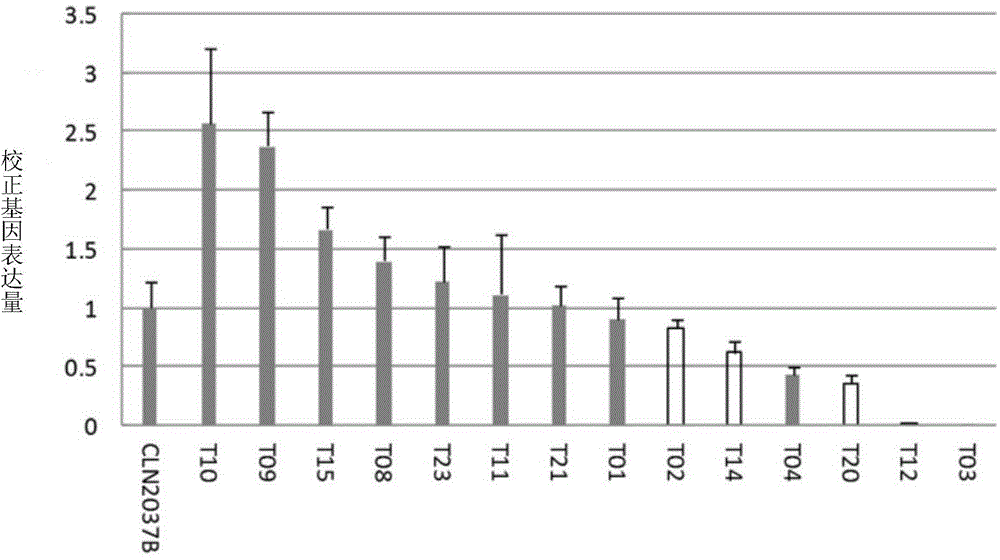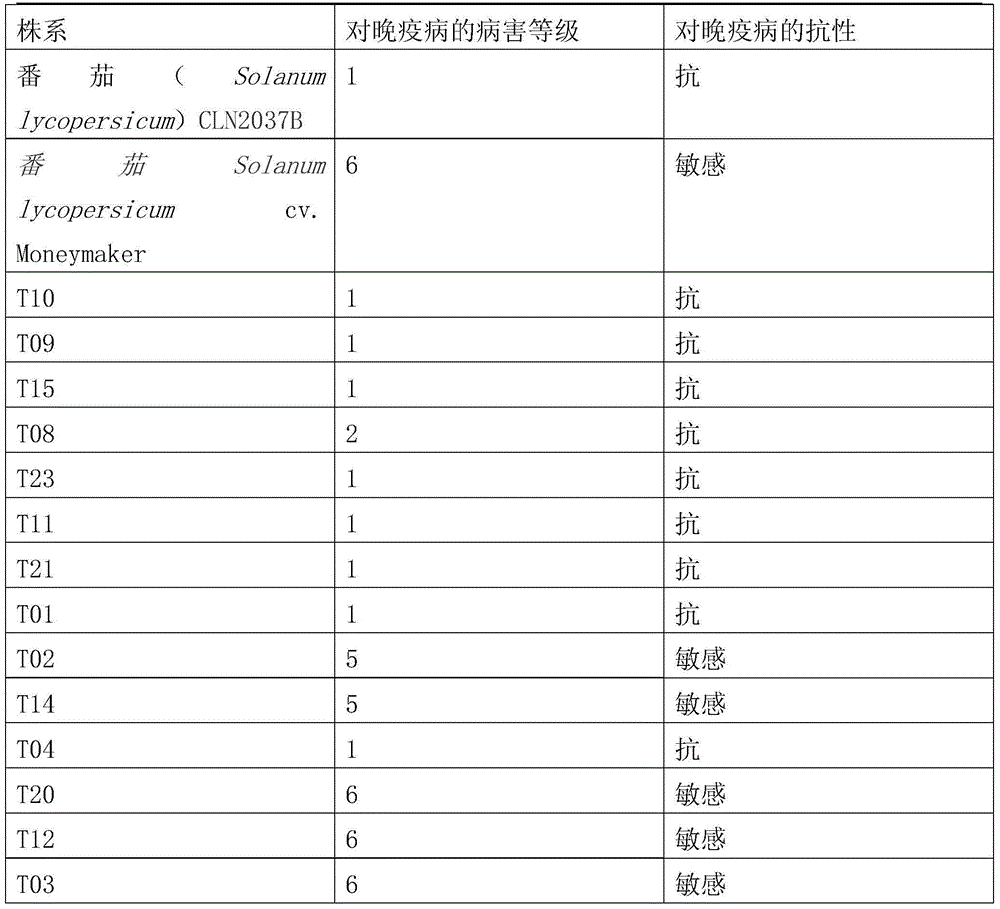Late blight resistance-related proteins and their related biomaterials and applications
A biomaterial and protein technology, applied in the field of late blight resistance-related proteins and related biomaterials, can solve the problems of insensitivity to fungicides, high cost, human health and environmental safety impacts, etc.
- Summary
- Abstract
- Description
- Claims
- Application Information
AI Technical Summary
Problems solved by technology
Method used
Image
Examples
Embodiment 1
[0063] Embodiment 1, the cloning of SP-LBR3 gene and its functional verification
[0064] 1. Cloning of SP-LBR3 gene
[0065] Genomic DNA of tomato (Solanum lycopersicum) CLN2037B was used as a template, and primers SP-LBR3EF3 (5'-taacctgcaggTTCAAACCATCTTCATAGAGGC-3') and SP-LBR3ER3 (5'-attggcgcgccTGGGGCTTAGAAAAAGGTTG-3') were obtained by using Phusion high-fidelity DNA polymerase (Thermo Fisher, Waltham, MA, USA) PCR amplified the fragment of 4kb upstream of SP-LBR3 gene, SP-LBR3 gene and downstream 2kb of SP-LBR3 gene, and this fragment was called SP-LBR3 gene expression cassette PCR product. The PCR product of the SP-LBR3 gene expression cassette was cloned into pCR-Blunt II-TOPO (Invitrogen, Carlsbad, CA, USA) to obtain a recombinant vector pCR-SP-LBR3 containing the PCR product of the SP-LBR3 gene expression cassette. Sequencing results show that the DNA sequence of the PCR product of the SP-LBR3 gene expression cassette is as SEQ ID No.1, which consists of 8007 nucleoti...
PUM
 Login to View More
Login to View More Abstract
Description
Claims
Application Information
 Login to View More
Login to View More - R&D
- Intellectual Property
- Life Sciences
- Materials
- Tech Scout
- Unparalleled Data Quality
- Higher Quality Content
- 60% Fewer Hallucinations
Browse by: Latest US Patents, China's latest patents, Technical Efficacy Thesaurus, Application Domain, Technology Topic, Popular Technical Reports.
© 2025 PatSnap. All rights reserved.Legal|Privacy policy|Modern Slavery Act Transparency Statement|Sitemap|About US| Contact US: help@patsnap.com



